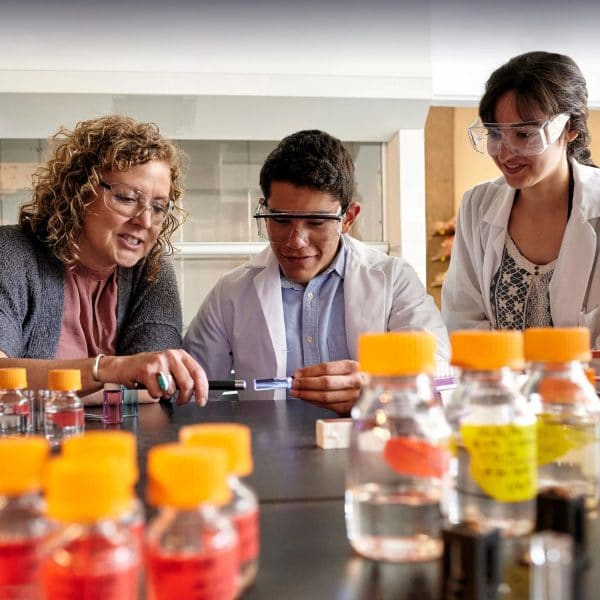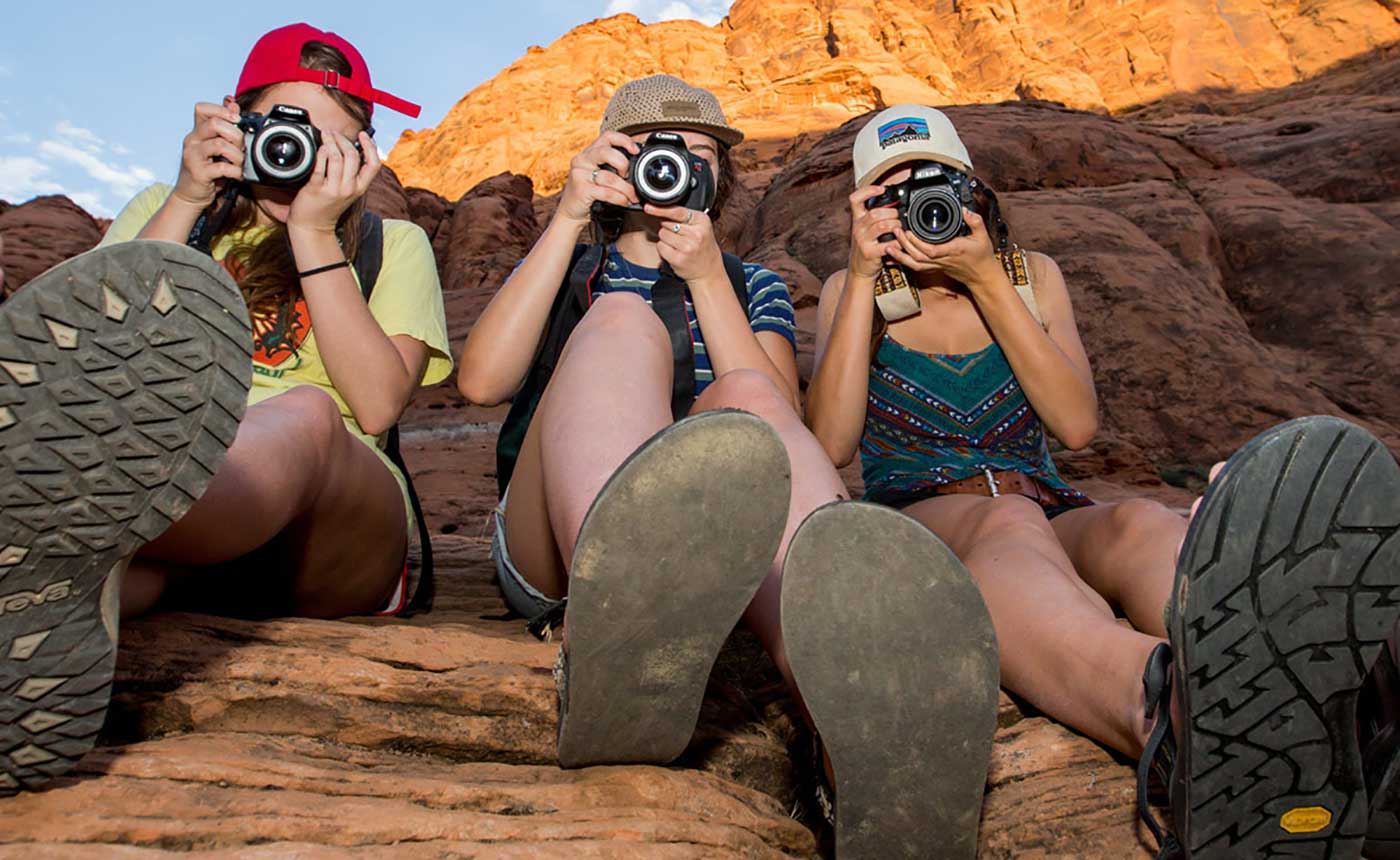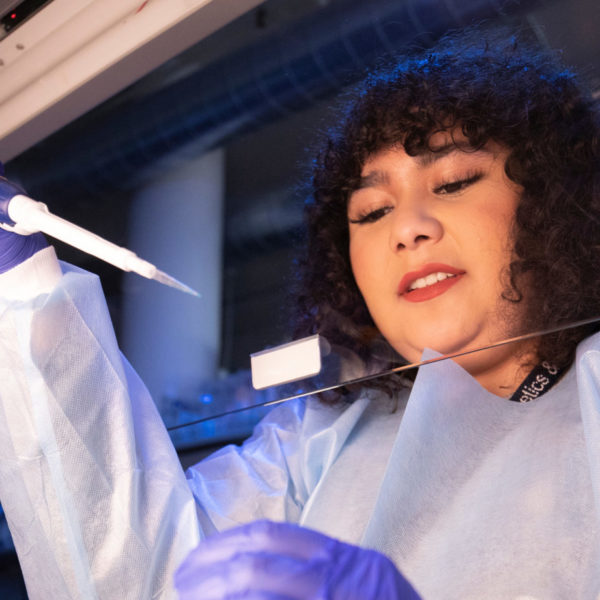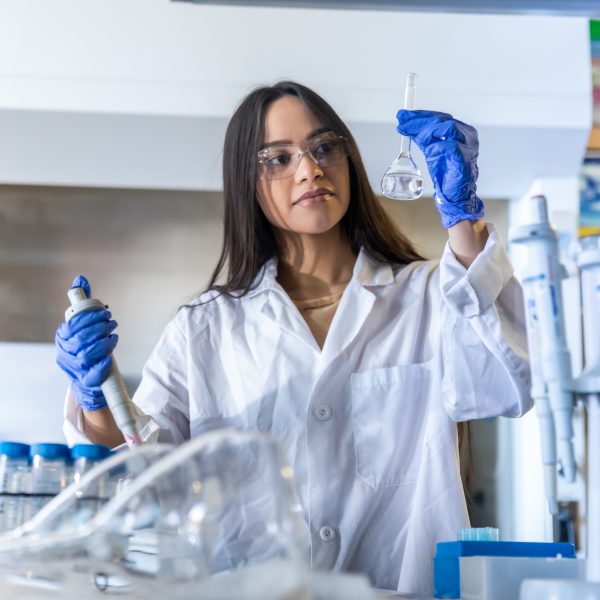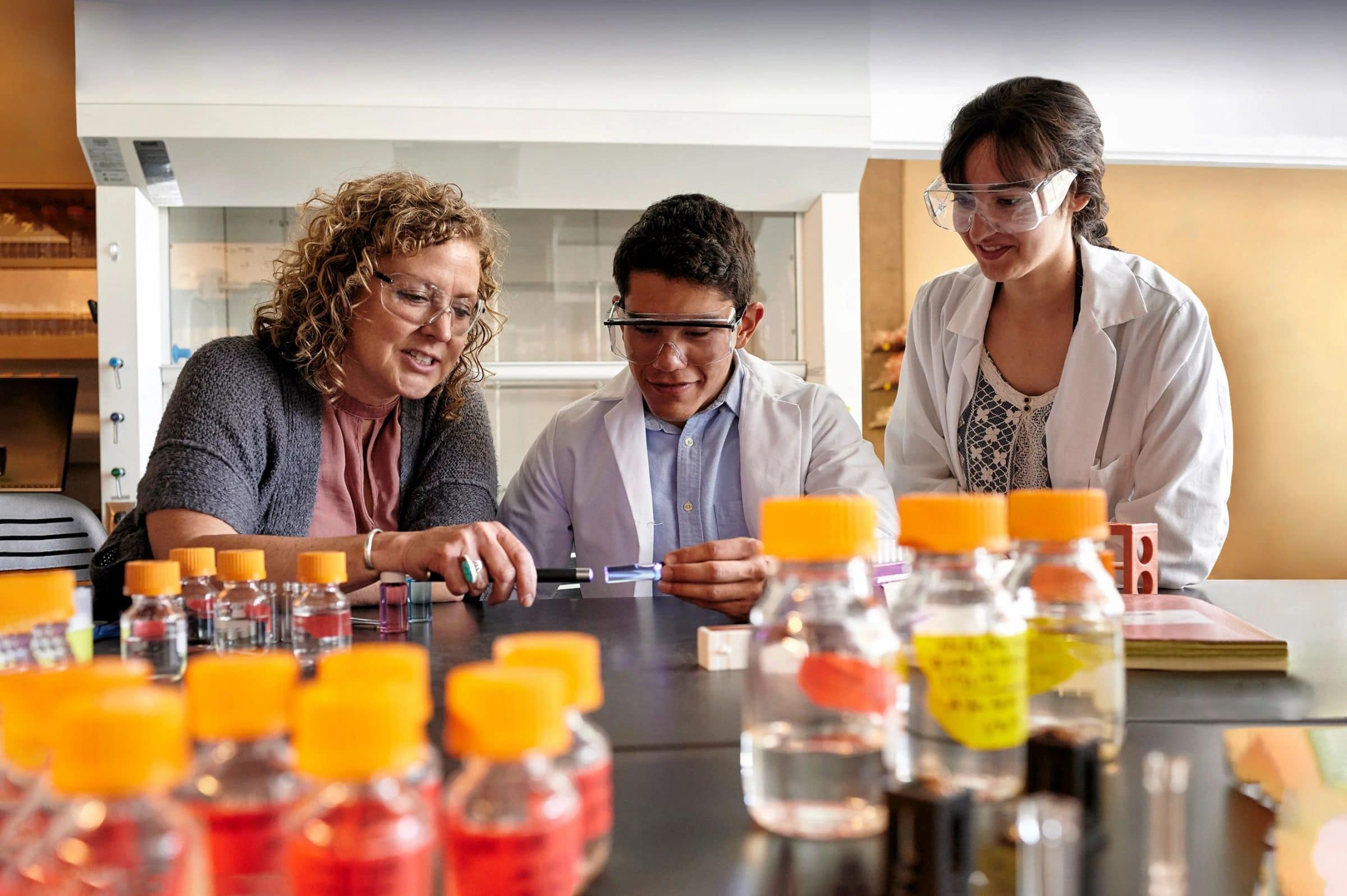
NAU’s Center for Materials Interfaces in Research & Applications (¡MIRA!) offers a new approach to science careers.
When researcher Jennifer Martinez was a student, it was a challenge to find mentors or programs representing Hispanic students like herself.
Many of Martinez’s colleagues faced similar experiences. Now, these faculty are making sure that students of diverse backgrounds feel supported while engaging in scientific research. The team formed NAU’s Center for Materials Interfaces in Research & Applications (¡MIRA!). More than half of ¡MIRA! faculty are women and/or minorities that have historically been underrepresented in higher education.
Materials science is one of the fastest-growing industries in Arizona. This interdisciplinary field focuses on creating and using materials with optimized usage based on their specific properties. Discoveries abound in specialized areas using biomaterials, plastics, ceramics, metal, or electrical materials.
“¡MIRA! translates to ‘look’ in Spanish,” said Martinez, ¡MIRA!’s director. “What we’re doing is inviting people to look at materials science, to look at NAU, and to look at our focus on changing diversity in STEM and materials science. We want a center that is here for all students, but in particular, we want to attract students who might want to see themselves mirrored in their leadership. That’s an opportunity we just didn’t have when we were looking for schools 30 years ago.”
Martinez, whose family hails from both the Southwest and Midwest United States, did not discover her passion for materials science until graduate school, where she worked as a chemist alongside top research faculty to study how ocean bacteria sequester iron.
“My family are naturalists, so they’re constantly looking at knowing as much as they can about nature,” she said. “What sparked my interest is to be able to connect the dots between the fine structure of what kind of materials nature makes with the phenomena that we see every day.”
Research opportunities bridge diversity gap
Through ¡MIRA!, Martinez and her colleagues aim to offer opportunities for the next generation of scientists. ¡MIRA! engages faculty and students from STEM programs across the NAU campus to provide undergraduates with the research experience, soft skills, and network connections that new grads need to compete in the growing materials science industry.
The program is open to everyone at NAU, but specifically encourages first-generation and underrepresented minority students to get involved. In 2021, NAU earned a US Department of Education Hispanic-Serving Institution (HSI) designation, as Hispanic students now comprise more than 25 percent of the university’s total enrollment.

Postdoctoral scholar Matt Rush, graduate student Christine Pedersen, and undergraduates Madi King and Ashley Martinez are all working as researchers on a ¡MIRA! project, using nanomaterials to change the way vaccinations are delivered. The project, done in partnership with researchers across the country, could be applied to the COVID-19 vaccine and inoculations against other new challenges that humanity may face in the future. Having opportunities to participate in such timely research provides NAU students—particularly undergraduates—with invaluable experience.
“By having people come from a diversity of backgrounds, we can change how we think and that improves materials science,” Martinez said. “It’s not just the right thing to diversify science, it’s the smart thing. We have to look at our full population and create opportunities for our full population. When everyone succeeds, it only benefits us all.”
¡MIRA!—the right people, place, and time
Thanks to NAU faculty connections with national laboratories and the numerous materials science companies in Flagstaff, ¡MIRA! students are prime candidates for careers in biotechnology, microelectronics, chemicals, medicine, and renewable energy.
¡MIRA! Chief Scientist Gabriel A. Montaño said the team strives to welcome student backgrounds and experiences.
“I spent half of my professional career trying to assimilate into a system because I thought that’s what I was supposed to do,” Montaño said. “I actually limited myself as a scientist. I started to get better not by trying to be somebody else, but by being myself. That’s something that we lay foundationally here and that we preach to students from day one.”
It’s not just the right thing to diversify science, it’s the smart thing.
Paid student research builds resume power
Through the ¡MIRA! Scholars program, which allows undergraduates to earn a living wage for research conducted alongside ¡MIRA! faculty, physics major Victoria Girgis was paid for her contributions to a research project focused on Circular Dichroism Spectroscopy, which she worked on under the direction of Associate Professor John Gibbs,
“As a woman of color, it’s nice to feel like I’m not the odd one out because they have this emphasis on hiring other people of color,” Girgis said. “It was really nice being able to see other people succeeding in the sciences who look like me.”
Chemistry major Patrick Eckhert, who studied DNA-templated silver nanoclusters with Martinez, described the center like a family and says the collective knowledge, experiences, and resources of participating faculty are easily available to students.
“All the faculty are so familiar and friendly with each other and their students. I think it really enhances the working environment and the ability to get things done and do good research, having such an integrated institute,” he said.
As the program expands in the coming years, it will aim to continue to provide diverse students the on-campus opportunities to achieve post-graduation success in an industry where continual advancement is a necessity.
“¡MIRA! has unique potential,” Montaño said. “It can be not only a state-of-the-art and cutting-edge research center, but it’s going to do it as a research and diversity center, which is unparalleled. People will be chasing us. We’re breaking the model and I think other people are going to come looking, trying to figure out how to replicate it.”

